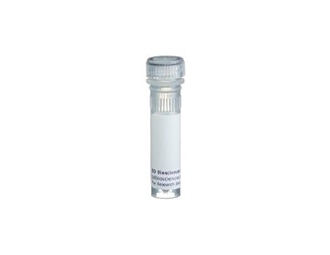-
Reagents
- Flow Cytometry Reagents
-
Western Blotting and Molecular Reagents
- Immunoassay Reagents
-
Single-Cell Multiomics Reagents
- BD® AbSeq Assay
- BD Rhapsody™ Accessory Kits
- BD® Single-Cell Multiplexing Kit
- BD Rhapsody™ Targeted mRNA Kits
- BD Rhapsody™ Whole Transcriptome Analysis (WTA) Amplification Kit
- BD Rhapsody™ TCR/BCR Profiling Assays for Human and Mouse
- BD® OMICS-Guard Sample Preservation Buffer
- BD Rhapsody™ ATAC-Seq Assays
-
Functional Assays
-
Microscopy and Imaging Reagents
-
Cell Preparation and Separation Reagents
-
Training
- Flow Cytometry Basic Training
-
Product-Based Training
- BD FACSDiscover™ S8 Cell Sorter Product Training
- Accuri C6 Plus Product-Based Training
- FACSAria Product Based Training
- FACSCanto Product-Based Training
- FACSLyric Product-Based Training
- FACSMelody Product-Based Training
- FACSymphony Product-Based Training
- HTS Product-Based Training
- LSRFortessa Product-Based Training
- Advanced Training
-
- BD® AbSeq Assay
- BD Rhapsody™ Accessory Kits
- BD® Single-Cell Multiplexing Kit
- BD Rhapsody™ Targeted mRNA Kits
- BD Rhapsody™ Whole Transcriptome Analysis (WTA) Amplification Kit
- BD Rhapsody™ TCR/BCR Profiling Assays for Human and Mouse
- BD® OMICS-Guard Sample Preservation Buffer
- BD Rhapsody™ ATAC-Seq Assays
-
- BD FACSDiscover™ S8 Cell Sorter Product Training
- Accuri C6 Plus Product-Based Training
- FACSAria Product Based Training
- FACSCanto Product-Based Training
- FACSLyric Product-Based Training
- FACSMelody Product-Based Training
- FACSymphony Product-Based Training
- HTS Product-Based Training
- LSRFortessa Product-Based Training
- United States (English)
-
Change country/language
Old Browser
This page has been recently translated and is available in French now.
Looks like you're visiting us from {countryName}.
Would you like to stay on the current country site or be switched to your country?




Expression of cell surface IFN-γRα by BALB/c splenic lymphocytes. RBC-lysed BALB/c spleen cells were preincubated (~15 minutes, 4°C) with purified 2.4G2 antibody [rat anti-mouse CD16 (FcγIII)/CD32 (FcγII); Cat. No. 553142; 1 µg antibody/10e6 cells]. The cells were stained (30 minutes, 4°C) with biotinylated 2E2 antibody (1 µg mAb/10e6 cells; Cat. No. 550482) followed by R-PE-conjugated streptavidin (Cat. No. 554061; 0.015 µg PE-SA/10e6 cells). After washing, the cells were analyzed with a FACScan™ Flow Cytometer. The immunofluorescent staining patterns for cells stained with either biotinylated 2E2 antibody (filled histogram) or Streptavidin-PE (background staining; empty histogram) are shown. The histograms were generated from reanalyzed flow cytometric data files that were gated for events with the light-scattering characteristics of lymphocytes.


BD Pharmingen™ Biotin Hamster Anti-Mouse CD119

Regulatory Status Legend
Any use of products other than the permitted use without the express written authorization of Becton, Dickinson and Company is strictly prohibited.
Preparation And Storage
Recommended Assay Procedures
Recommended Assay Procedure:
Immunofluorescent Staining and Flow Cytometric Analysis: The biotinylated form of 2E2 (Cat. No. 550482) can be used for the immunofluorescent staining (≤ 1 µg antibody/10e6 cells) and flow cytometric analysis of normal mouse cells or cell lines to measure their expressed levels of IFN-γRα. It is recommended that the biotin format of this antibody be used in conjunction with streptavidin-phycoerythrin (PE) (Cat No. 554061) in a two-layer staining procedure to amplify immunofluorescent signals. (see figure). An appropriate purified immunoglobulin isotype control is clone A19-3 (Cat. No. 553970).
Note: 2E2 is a nonblocking antibody that can be used for the unobstructed immunofluorescent staining and flow cytometric analysis of cells in systems where the ligand (i.e., IFN-γ) for IFN-γ receptors is present.
Immunoprecipitation: The 2E2 antibody has been reported to be useful for the immunoprecipitation of IFN-γRα chains from lysates of cloned mouse T cells. Please note that this application is not routinely tested at BD Biosciences Pharmingen.
Product Notices
- Since applications vary, each investigator should titrate the reagent to obtain optimal results.
- Please refer to www.bdbiosciences.com/us/s/resources for technical protocols.
- Caution: Sodium azide yields highly toxic hydrazoic acid under acidic conditions. Dilute azide compounds in running water before discarding to avoid accumulation of potentially explosive deposits in plumbing.
Companion Products


.png?imwidth=320)
The 2E2 antibody recognizes the extracellular region of the 90 kDa alpha chain subunit of the mouse interferon-γ receptor (IFN-γRα; aka, CD119). The functionally active-form of the mouse IFN-γ receptor consists of two (or more) subunits, with IFN-γRα responsible for IFN-γ binding and both the IFN-γRα and IFN-γRβ chains required for the transduction of biologic responses. IFN-γRα is expressed by a variety of cell lines and normal mouse cells (except mature erythrocytes) including T cells, B cells, NK cells, monocytes, neutrophils, fibroblasts, epithelial and endothelial cells. The 2E2 antibody is a non-neutralizing antibody; it does not block the binding of IFN-γ to its receptor. The immunogen used to generate this hybridoma was a purified preparation of soluble recombinant mouse IFN-γRα chain protein.
This antibody is routinely tested by flow cytometric analysis. Other applications were tested at BD Biosciences Pharmingen during antibody development only or reported in the literature.
Development References (2)
-
Bach EA, Szabo SJ, Dighe AS, et al. Ligand-induced autoregulation of IFN-gamma receptor beta chain expression in T helper cell subsets.. Science. 1995; 270(5239):1215-8. (Clone-specific: Immunoprecipitation). View Reference
-
Zola H. Detection of cytokine receptors by flow cytometry. In: Coligan JE, Kruisbeek AM, Margulies DH, Shevach EM, Strober W, ed. Current Protocols in Immunology. New York: Green Publishing Associates and Wiley-Interscience; 1995:6.21.1-6.21.18.
Please refer to Support Documents for Quality Certificates
Global - Refer to manufacturer's instructions for use and related User Manuals and Technical data sheets before using this products as described
Comparisons, where applicable, are made against older BD Technology, manual methods or are general performance claims. Comparisons are not made against non-BD technologies, unless otherwise noted.
For Research Use Only. Not for use in diagnostic or therapeutic procedures.
Report a Site Issue
This form is intended to help us improve our website experience. For other support, please visit our Contact Us page.